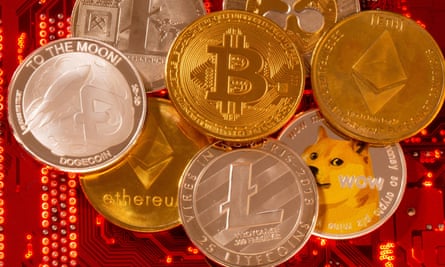Few dates in economic history classify as turning points but one of them was 15 August 1971 when Richard Nixon went on TV to announce that the US would no longer exchange dollars held by foreign governments for gold.
Nixon’s announcement 50 years ago this week had lasting ramifications. It was a statement to the world that the US was too weak to continue anchoring the global monetary system as it had done for the past quarter of a century. It would remain the world’s biggest and most important economy, but the days when it was uniquely dominant were at an end.
Shock waves from Washington’s decision to break the link with gold have rippled down the decades. The creation of the euro, the hollowing out of US manufacturing, the arrival of cryptocurrencies and the ability of central banks to print seemingly unlimited quantities of money can all be traced back to August 1971.
In truth, Nixon had little choice because the system of international economic management established at Bretton Woods in 1944 was breaking down. Under the agreement, currencies such as the pound, the French franc and the German mark were linked to the dollar at a fixed exchange rate. To ensure the stability of the system, the dollar was fixed to gold at a rate of $35 an ounce. Any country that built up a stock of dollars by running a trade surplus with the US could exchange them for gold.
This was something foreign governments were increasingly keen to do by 1971 because confidence in the dollar had been knocked by rising US inflation and balance of payments deficits. Gold reserves held in the vault of Fort Knox were rapidly depleted and Nixon finally called time on the Bretton Woods system days after a French naval vessel arrived off Manhattan with orders from Georges Pompidou to repatriate the gold held by the Federal Reserve.

Nixon insisted that his decision to close the gold “window” was temporary, but it clearly wasn’t. It was as significant as Britain’s decision to break the pound’s link with gold 40 years earlier in August 1931. That signalled the end of the classic 19th-century gold standard. Nixon’s decision was evidence that time was up for its replacement.
Milton Friedman and other monetarist economists were delighted. They said the end of fixed exchange rates would usher in greater stability and low inflation because the value of currencies would be decided by the financial markets, introducing discipline that would keep governments honest.
Things didn’t quite work out that way. Without the dollar as the linchpin of the international system, the inflationary pressure that had been building in the late 1960s intensified. Oil trades in dollars, so one consequence of the devaluation of the US currency was that countries producing crude were receiving less for each barrel they pumped. Unsurprisingly, they raised their prices. Little more than two years after Nixon’s gold announcement the global economy was hit with a fourfold increase in the price of oil.
The US and other western countries struggled to cope with the inflationary shock. Corporate profitability suffered, encouraging firms to move their production plants to parts of the world where labour costs were cheaper. By the time the US started to take draconian steps to curb inflation at the end of the 1970s, Deng Xiaoping was launching the reforms that would turn China from an economic backwater into an industrial superpower. Fifty years after the collapse of the Bretton Woods system, China has emerged as a bigger threat to the US than the Soviet Union ever was.
It may take longer for China’s currency to challenge the dollar’s position as the world’s reserve currency, and it may be that it never will. Investors know they can always get their money out of the US but with China they are not so sure.
In 2019, when he was the governor of the Bank of England, Mark Carney floated the idea of a global digital currency – backed by a number of central banks – as a replacement for the dollar. Carney said his plan would help stabilise financial markets unsettled by trade and currency disputes.
Were Carney’s plan ever to come to fruition it would mark the final stage in the shift from a system where currencies were backed by something tangible – gold – to one where they are virtual. It is not hard to see why there are those who feel uneasy about this.
Why? Well, for a start, events of half a century ago led to a rapid increase in currency trading. Foreign exchange markets can be wild and unpredictable places. Governments, as Carney pointed out, try to secure competitive advantage by manipulating their currencies and by protectionist trade policies.
One way of doing this is through quantitative easing, the process by which central banks create money though the purchase of bonds. Trillions of dollars, euros, pounds and yen pumped into the global economy over the past decade.
Classical economic theory would suggest that an increase in the money supply of this magnitude should lead to a sharp rise in inflation but that has not happened. At least not yet. Before they became the ultimate speculative play for financial investors, the rationale for cryptocurrencies such as bitcoin was that they represented a hedge against the profligacy of central banks.
Tricky Dicky didn’t know it in 1971 but 50 years on his decision has led to a world of volatile financial markets, geopolitical tension, inflated asset prices underwritten by low interest rates and QE, and where trust in central banks is starting to wear a bit thin. In the circumstances, it is perhaps easy to understand why governments have decided to hold on to their remaining gold stocks.

